Valvular Pathophysiology I: Aortic and Mitral Regurgitation
1/29
There's no tags or description
Looks like no tags are added yet.
Name | Mastery | Learn | Test | Matching | Spaced |
|---|
No study sessions yet.
30 Terms
What does each spot on the Wiggers Diagram? Draw the diagram out
Wiggers Diagram shows the different points of pressure in the heart and vasculature as it coincides with the EKG
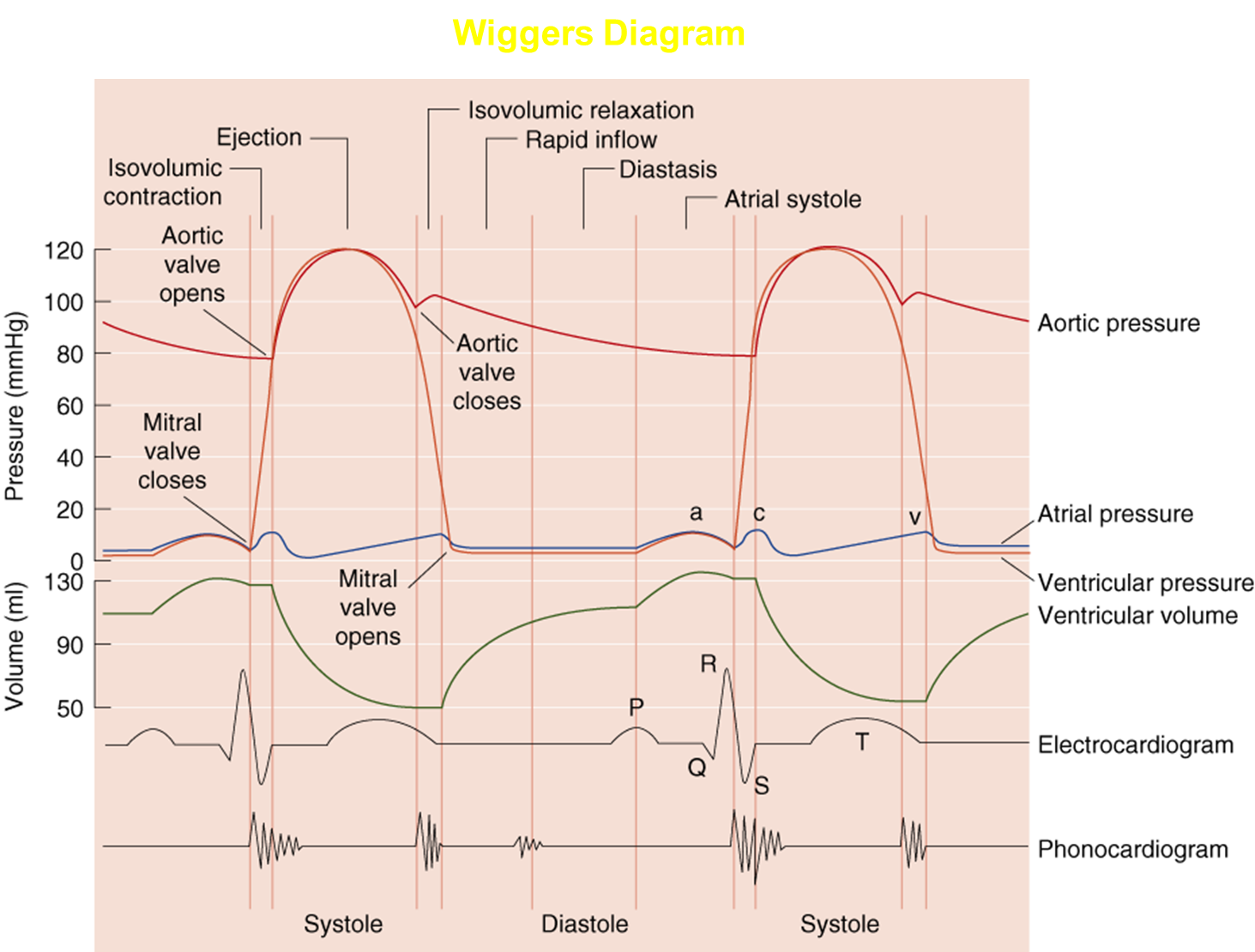
What are the four heart sounds?
Normally, closure of valves are associated with heart sounds
→ S1 - closure of the mitral valve
→ S2 - closure of the aortic valve
→ S3 - abnormal sound, rapid filling of the ventricle during early diastole
→ S4 - abnormal sound, associated with atrial contraction against abnormally stiff ventricle, late diastole
What is the End Diastolic Pressure Volume Relationship related to?
Also known as the compliance curve, the EDPVR will shift up or down on the Pressure-Volume loop depending on the compliance of the ventricle
→ a decrease in compliancy will cause the curve to shift upward
→ an increase in compliancy will cause the curve to shift downward

What is a Systolic murmur in the Atrioventricular valves and Semilunar valves? When are each heard and why?
Presentation of a Systolic Murmur
→ AV valves - regurgitation/incompetency
→ Semilunar valves - Stenosis
Regurgitant murmurs manifest when the valves are closed and stenotic murmurs manifest when the valves are open
→ there is isovolumetric constriction prior to the semilunar valves opening, so the stenotic murmur will be heard in the middle of the phase
→ the regurgitant murmurs will manifest as soon as the atrioventricular valve closes, so in this case it would be at the beginning of systole after S1
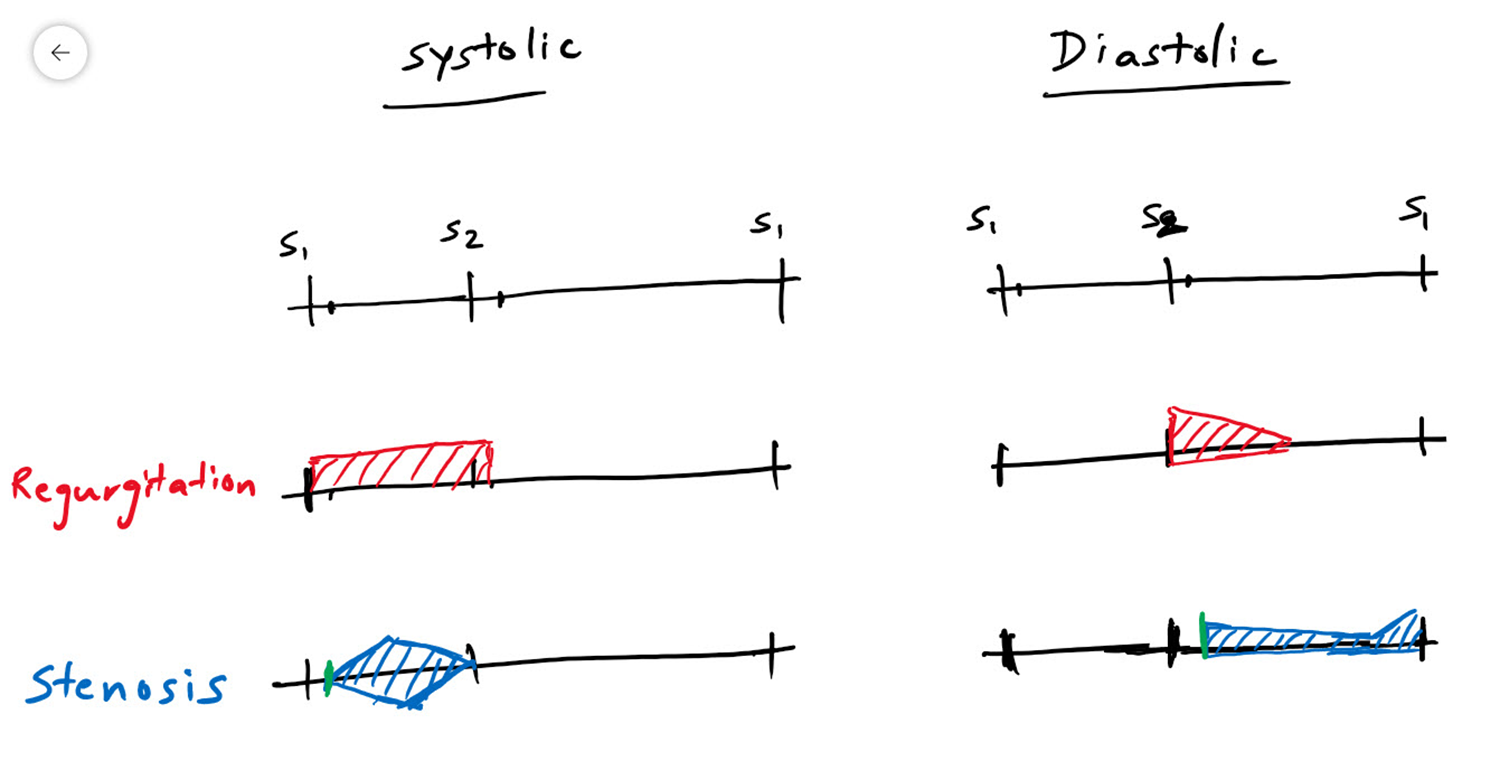
What is Diastolic murmur for the AV valves and Semilunar valves? When would you hear each of these murmurs?
Presentation of a Diastolic Murmur
→ AV valves - stenosis
→ Semilunar valves - regurgitation/incompetency
Regurgitant murmurs manifest when the valves are closed and stenotic murmurs manifest when the valves are open
→ there is isovolumetric relaxation prior to the atrioventricular valves opening, so the stenotic murmur will be heard in the middle of the phase
→ the regurgitant murmurs will manifest as soon as the semilunar valve closes, so in this case it would be at the beginning of systole after S2

What hemodynamic factor does aortic regurgitation and mitral regurgitation result in?
Mitral and Aortic Regurgitation would result in an increase left ventricular end diastolic volume
→ Aortic regurgitation causes blood to come back into the left ventricle during diastole, causing the increase in volume
→ During Systole, regurgitation causes blood to shoot back into the left atrium, which will be pumped back into the ventricle during diastole causing the increase in volume
What occurs during chronic regurgitation of the mitral and aortic valves?
Chronic Regurgitation causes an increase in compliance of the left ventricle
→ Compensated Phase: the increase in preload causes the ventricle to dilate and increase in compliance - undergo eccentric hypertrophy
→ during the compensated phase the disease is typically asymptomatic
→ eventually can enter the decompensated stage: basically heart failure as the result of myocardial dysfunction which is related to decrease in systolic function
How is acute regurgitation different from chronic regurgitation?
Chronic Regurgitation is often asymptomatic whereas acute regurgitation is often symptomatic right from onset
→ When acute aortic regurgitation occurs, the increased volume will invade the left ventricle rapidly causing an increase in end diastolic pressure, preventing any compensation mechanisms to occur
→ chronic regurgitation has a long compensated phase despite the increase in left ventricular end diastolic volume because of an increase in compliance
What are the three Acute causes of Aortic Regurgitation
Acute:
→ infection of the heart (endocarditis)
→ aortic dissection
→ trauma
What are the Chronic causes of Aortic Regurgitation?
Chronic Causes are subdivided into two parts:
→ Disorders of the valve leaflet
→ Disorders of the aortic root (dilation of the aortic root)
What happens to the Pressure-Volume loop during Chronic Aortic Regurgitation?
Chronic Aortic Regurgitation causes there to be an increase in compliance
→ causes the end diastolic pressure volume relationship curve to shift downward while also increasing the end diastolic volume
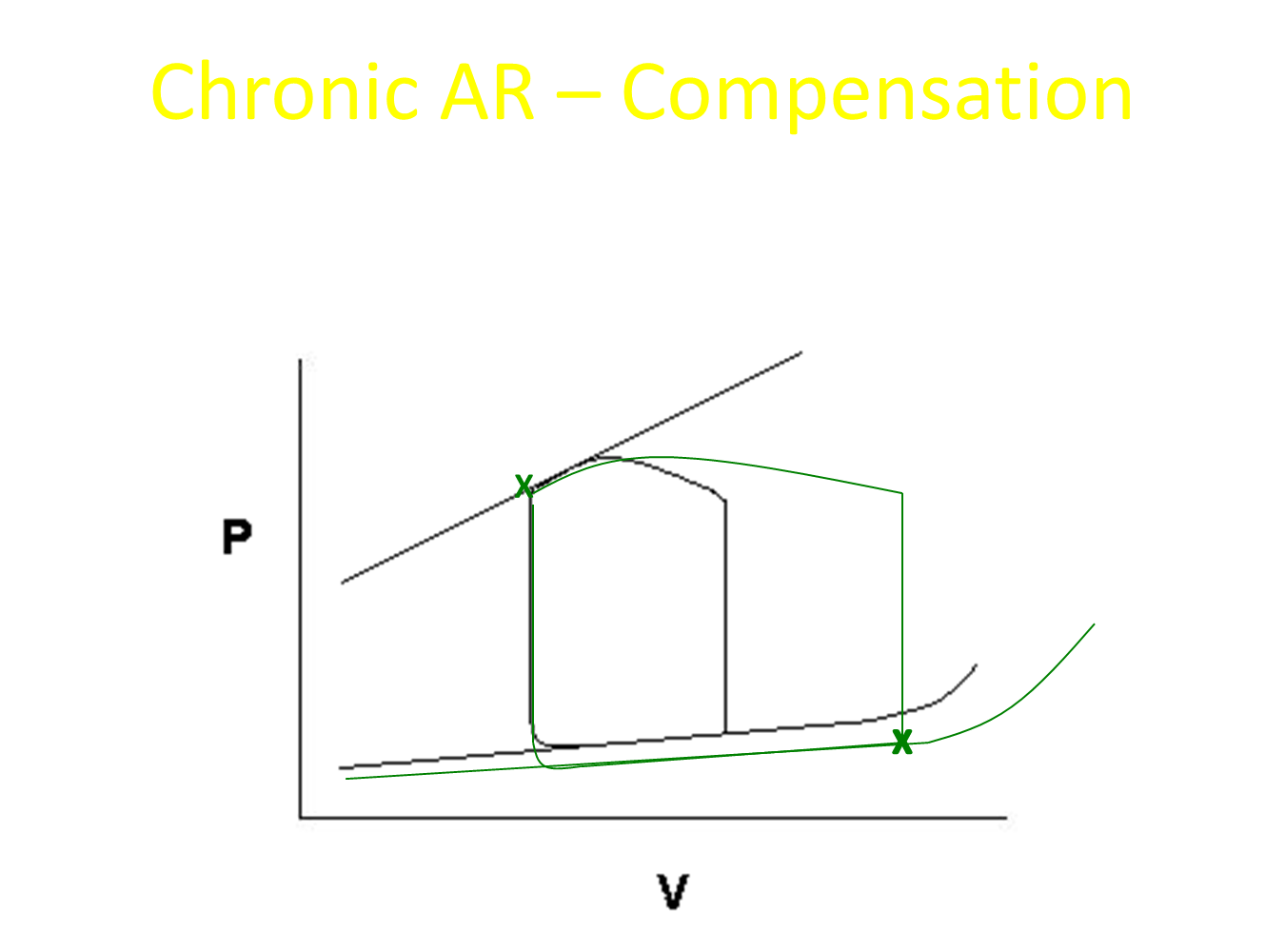
What occurs to the volume and pressure in the ventricles during the decompensated phase of aortic regurgitation? Demonstrate this on the PV loop.
During the decompensated phase of aortic regurgitation there is a drop in contractility which causes an even greater increase in end diastolic volume
→ along with the increase in EDV there is also an increase in end systolic volume as well, whereas in compensated aortic regurgitation ESV remains the same. end diastolic and systolic pressure would increase as well
→ this all occurs because of a drop in contractility

What would compensated aortic regurgitation appear like on a Wigger’s Diagram? What sound is associated with this?
The Wigger’s Diagram would show aortic pressure continue to decrease despite the aortic valve closing
→ there would be a continuous decrease in diastolic pressure because of regurgitation into the left ventricle
→ murmur would be heard as soon as the aortic valve closes or the beginning of diastole (immediate diastolic murmur) which decrescendos
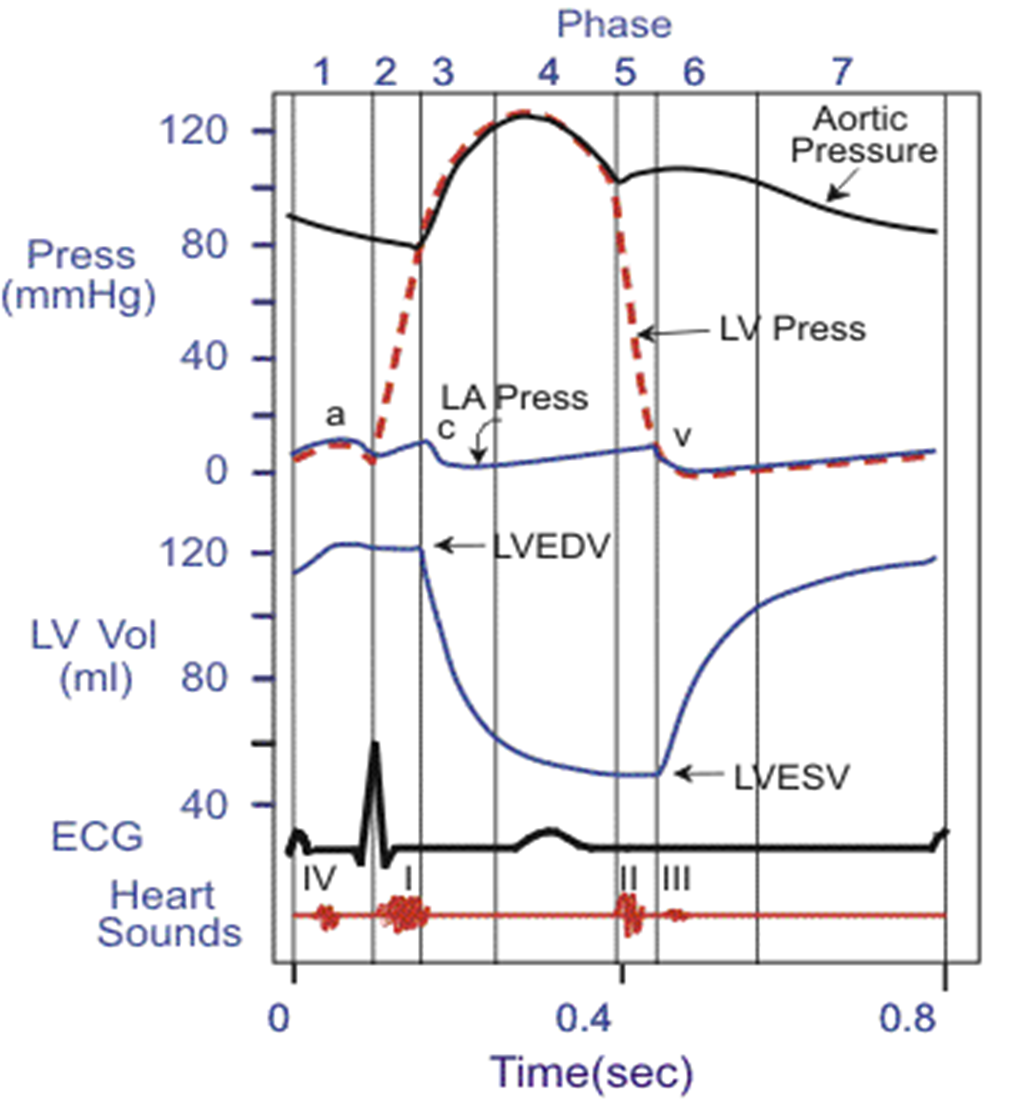
What would decompensated aortic regurgitation appear like on a Wigger’s Diagram? What sound is associated with this?
In decompensated aortic regurgitation, there is an increase in left ventricular diastolic pressure and left atrial pressures
→ you would also see the continuous decrease in diastolic pressure because of regurgitation into the left ventricle, similar to compensated
→ murmur would be heard as soon as the aortic valve closes or the beginning of diastole (immediate diastolic murmur) which decrescendos

What are the two signs of chronic aortic regurgitation?
Early diastolic, decrescendo murmur beginning at S2
→ best heard at the left sternal border with the patient leaning forward after they exhale
→ an S3 can also be heard
Widened pulse pressure - collapsing/water hammer pulse
→ high systolic pressure because of a increased stroke volume and a low diastolic pressure caused by regurgitation
What are the four symptoms associated with decompensated chronic aortic regurgitation?
→ Volume Overload - Dyspnea
→ Diminished Output - Fatigue
→ Palpitations - Widened Pulse Pressure
→ Angina can occur - decreased coronary perfusion pressure because of decrease aortic diastolic pressure and increased left ventricle size
What are the three factors that can affect the severity of aortic regurgitation?
1) Size of the hole
2) Pressure gradient across the aortic valve during diastole
→ patients with hypertension will have greater regurgitation because of an increased pressure gradient during diastole
3) Duration of diastole
→ the shorter the diastole, the less the regurgitation
What are the treatments for all valvular problems? What is the treatment for chronic aortic regurgitation?
All valvular problems, including regurgitations involve mechanical treatments such as surgery
→ for Aortic and Mitral Regurgitation it would be surgery to replace the valve - when the patients are symptomatic or asymptomatic with myocardial dysfunction
→ Vasodilators can be used in patients that are asymptomatic, but are not a replacement for surgery
What occurs to the volume and pressure in the ventricles during acute aortic regurgitation?
Acute Aortic Regurgitation would cause the same symptoms as the decompensated phase in chronic aortic regurgitation
→ great increase in Left Ventricular End Diastolic Pressure caused by a increase in volume
What are the sounds and pulse pressure associated with acute aortic regurgitation
The murmur is short
→ the left ventricular diastolic pressure will continue to increase while the aortic pressure drops
→ this will cause the pressure to equalize near the end of diastole, causing the regurgitation to end and causes the murmur to stop
Pulse pressure is normal
→ same reason as the murmur
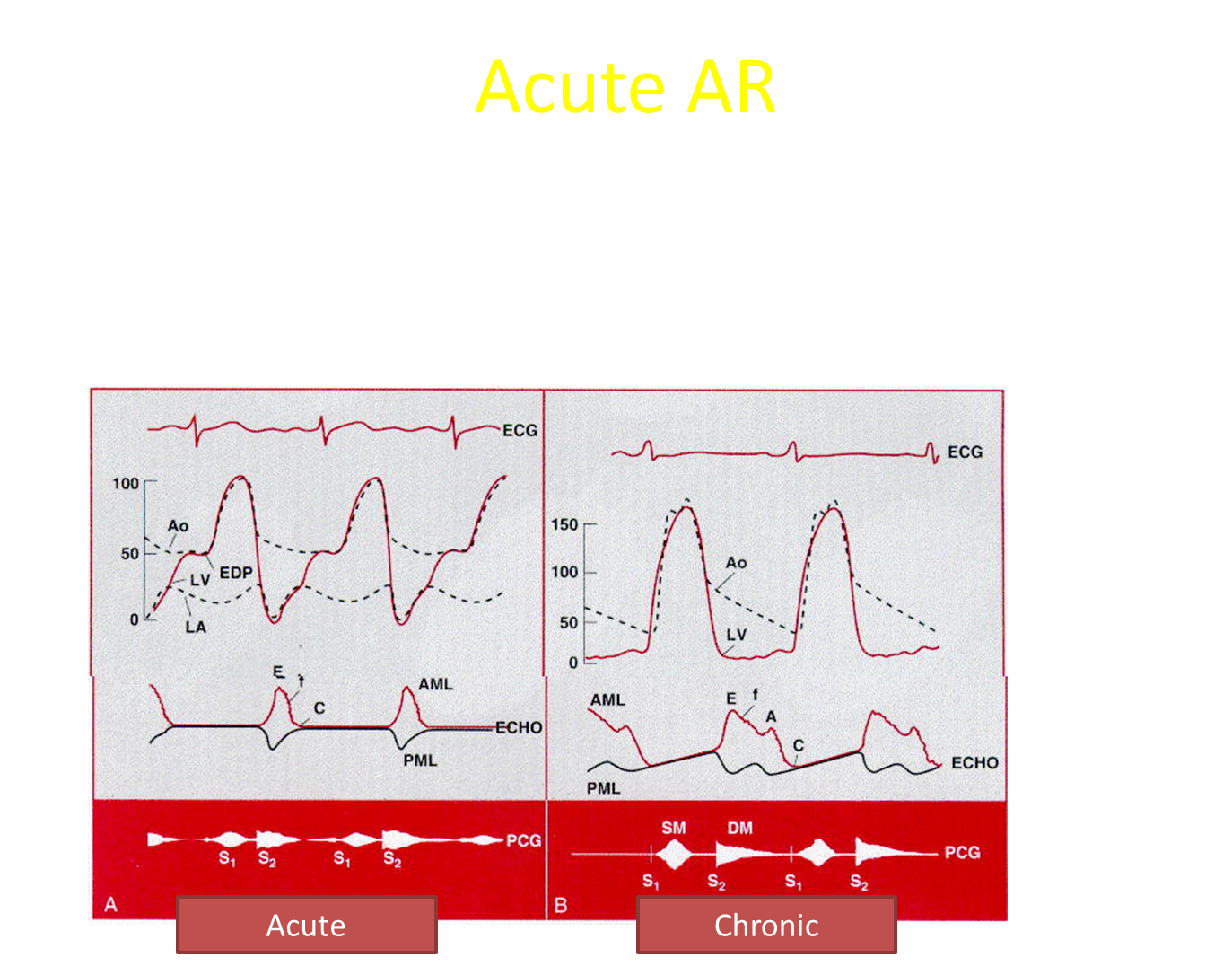
What are the acute causes of mitral regurgitaiton?
Acute
→ Rupture of the Chordae Tendineae or Papillary Muscle
What are the chronic causes of mitral regurgitation
Chronic is divided into two causes
→ Organic: disorder of the leaflets
→ Functional: Annulus (ring of the mitral valve)
What occurs during both acute and chronic mitral regurgitation
Acute
→ mitral regurgitation that is acute lacks the ability to compensate, which causes the regurgitation into the left atrium resulting in an increase in left atrial pressure and left ventricular end diastolic pressure
→ pulmonary edema
Chronic
→ Left atrium and ventricle will compensate to the increased volume by dilating, leading to no significant change in diastolic pressure even though there is increased left ventricular end diastolic volume
What is the difference between mitral and aortic regurgitation management and observation
Aortic Regurgitation patients that are in the compensated phase can be monitored by observing the End systolic volume and pressure and the ejection fraction
However, mitral regurgitation patients have their left atrium which dilates in response to the regurgitant volume, acting as a low pressure sink during systole
→ by dilating it prevents an increase in pressure despite increased volume, delaying pulmonary congestion
→ because we have the left atrium to take blood, even with myocardial dysfunction, the heart can still eject the same stroke volume - stroke volume will look the same because ESV will be the same
→ this can mask the development of left ventricular dysfunction, and only becomes clear when the mitral valve is fixed
What would you observe on a pressure volume loop for a compensated chronic mitral regurgitation patient?
The patient would have increased compliance, causing a downward shift of the EDVPR
→ major increase in end diastolic volume, but nearly everything else would remain about the same
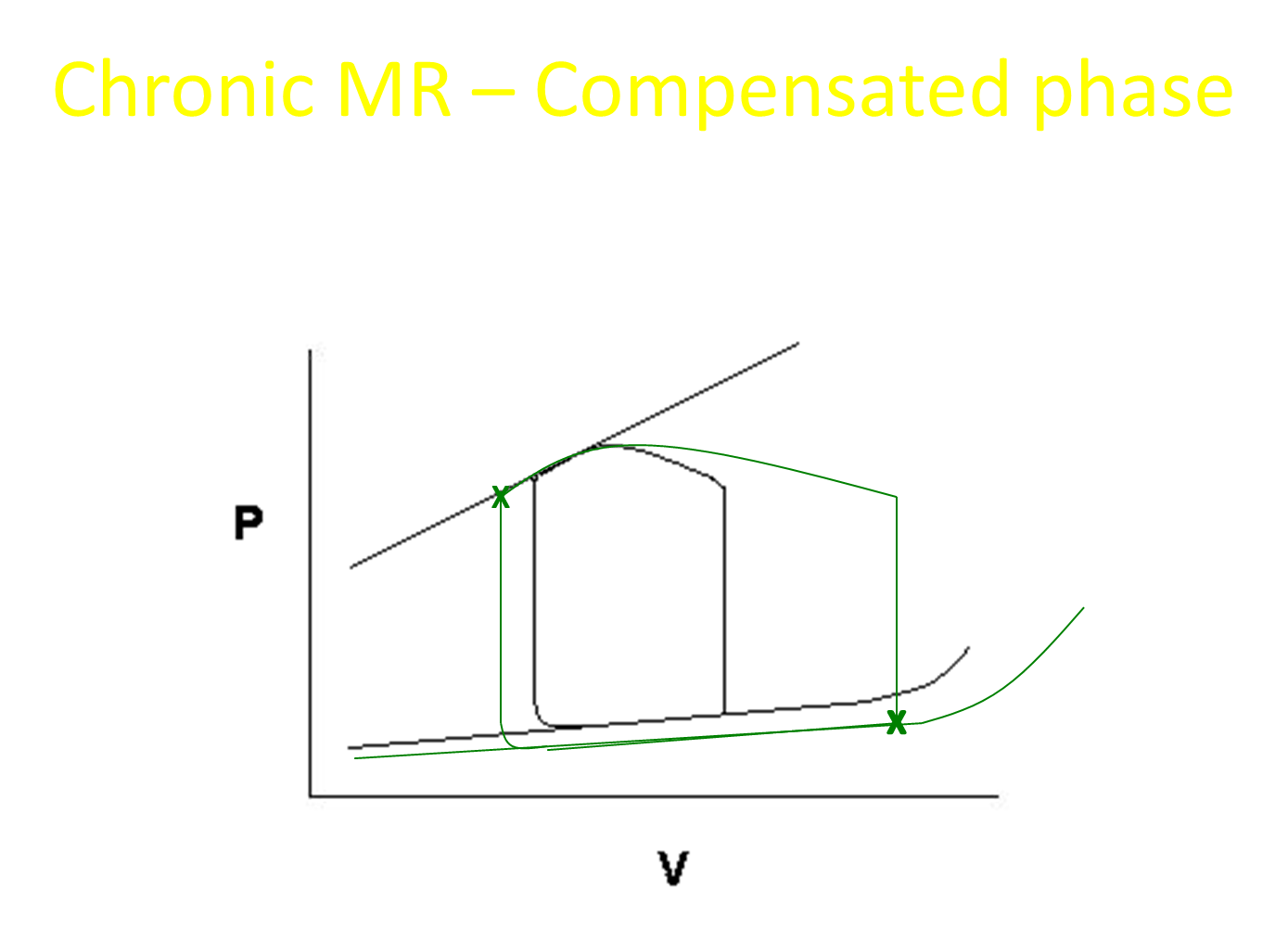
What would you observe on a pressure volume loop for a decompensated chronic mitral regurgitation patient?
You would notice a decrease in contractility, with the whole PV loop shifting to the right
→ end diastolic volume and end systolic volume is increased
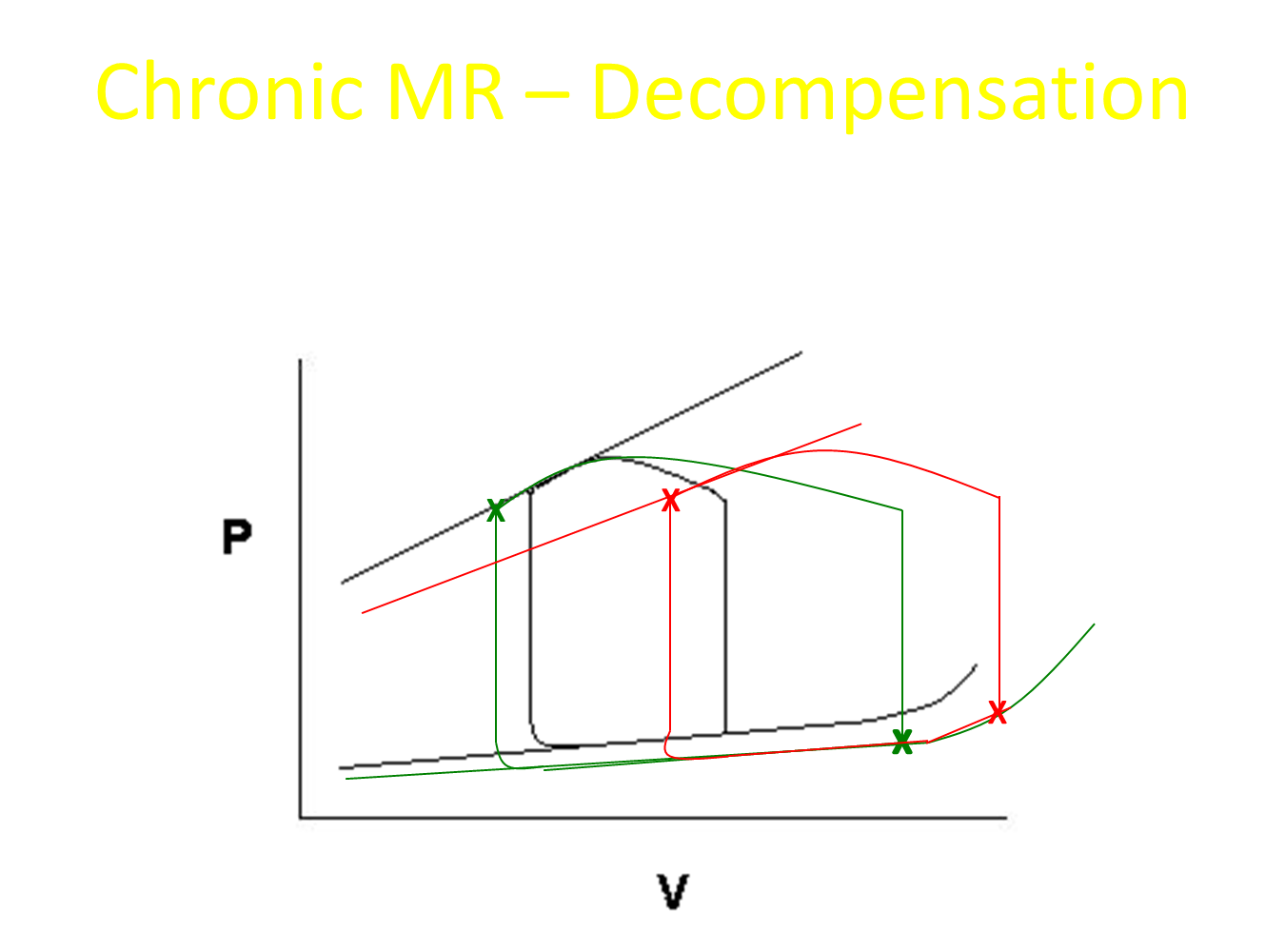
What would you observe on a Wigger’s Diagram for Mitral Regurgitation? What about sounds?
During systole, the left atrial pressure wave would have a marked increase during systole
→ results in a major increase in the V wave
Murmur would manifest at the start of systole, and remains until a little bit past the end of systole (past S2)
→ holo-systolic (pan-systolic) murmur
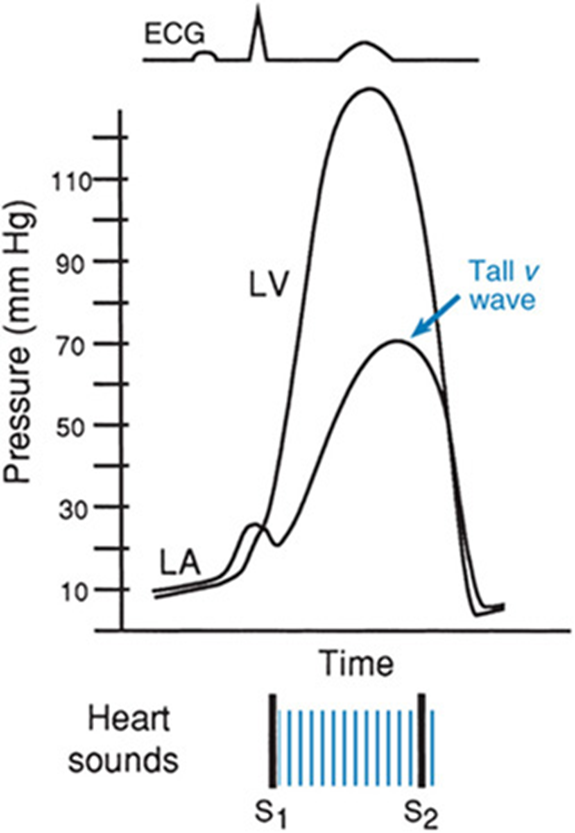
What are the signs on exam of chronic mitral regurgitation
Holo-systolic (pan systolic) murmur
→ can be heard clearly at the apex of the heart
→ severity of the murmur is increased when systemic vascular resistance is increased such as clenching the fists
S3 sound can also be heard
→ volume overload
What are the symptoms of decompensated chronic mitral regurgitation
1) Low cardiac output - fatigue and weakness
2) Volume overload
3) Left Atrial Dilatation can result in atrial fibrillation because the cells are stretched
What are the four major factors that affect the severity of mitral regurgitation?
1) Size of the hole
2) Left Atrial Pressure and Left Atrial Compliance
3) Systemic Vascular Resistance - increased SVR means there is more regurgitation
4) Duration of Regurgitation